Some plants thrive in shade. You can still have a garden even if all you have is shade. Just know, plants that thrive in shade are not the same plants that thrive in sunlight.
A shade garden is defined by the outlines of shadows cast by buildings, walls and fences, trees, and shrubs.
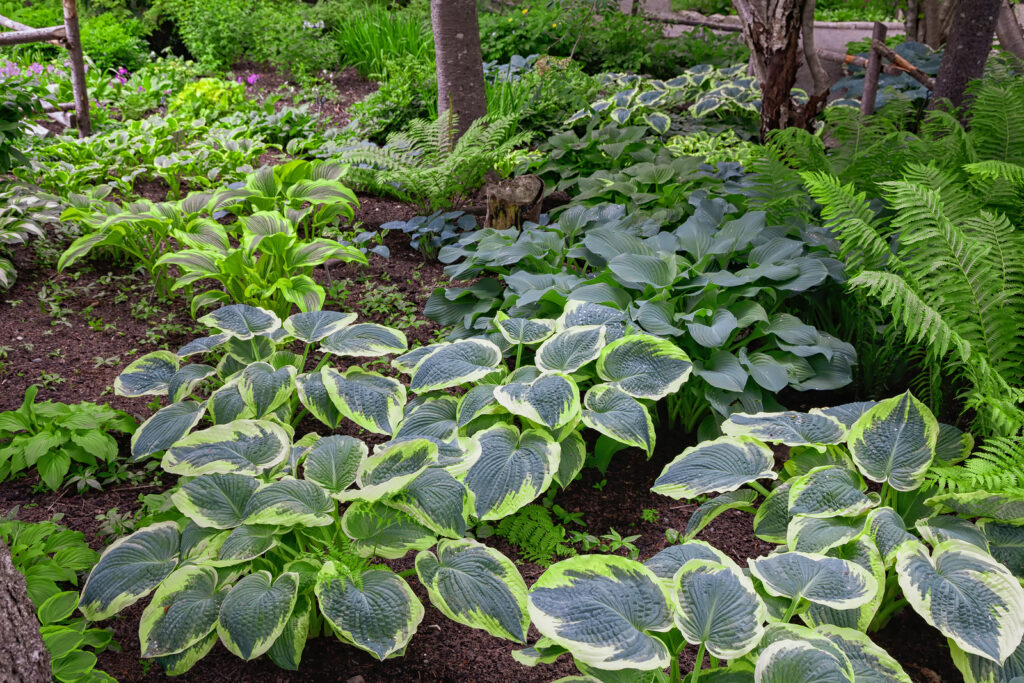
Types of sun and shade
Not all shade is the same. There are categories of shade. Here are the basic types of shade gardeners commonly refer to:
- Full shade. This is ground that gets less than four hours of sun per day. The number of plants that can grow in full shade is limited; they include azaleas, caladium, and lily-of-the-valley.
- Part shade or part sun. These terms mean the same; you can add partial sun or partial shade. This is ground that gets at least four hours of direct sun a day—usually in the morning or late afternoon. To this category you can add ground that get dappled sun all day—that is sun mixed with shade as you might find under a large tree. In hot summer regions, part shade can be a good thing. The key is that enough light reaches plants that morning dew evaporated before sunset.
- Full sun. This term applies to ground that gets six or more hours of full, direct sun a day. Plants that need full sun can not get by without at least six hours of direct sun; plants that need partial shade do not want more than six hours of sun direct sun each day.
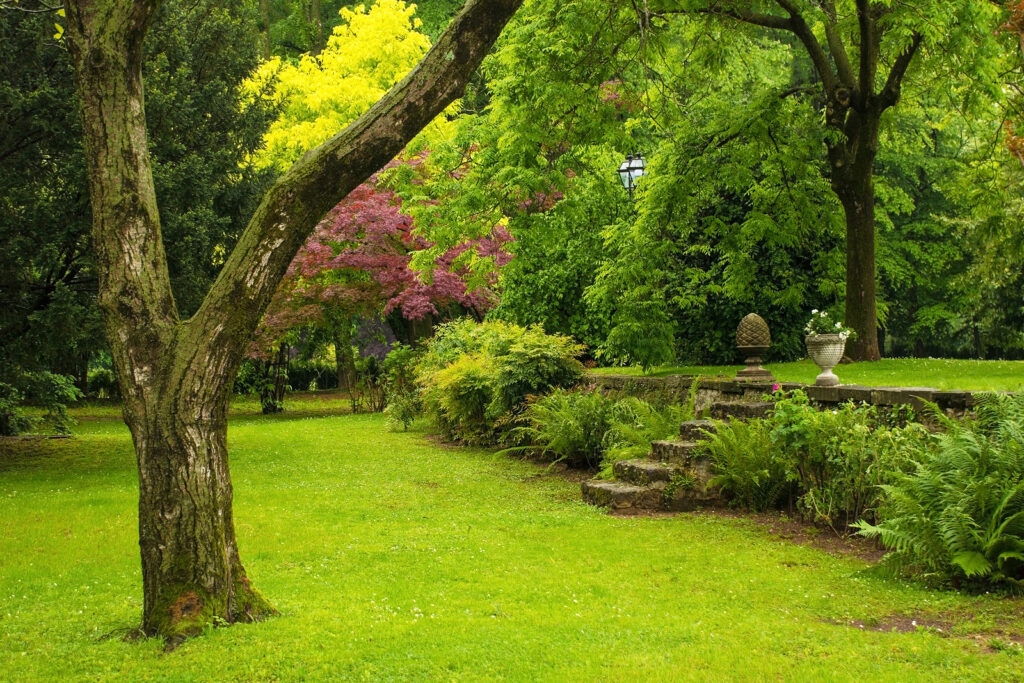
Light and shade in your garden
Observing the sun and shade in your garden is important. If your garden is not sunny all day, it’s good to know when and where the shade falls.
Keep in mind, the angle of the sun changes over the course of the day and also over the course of the year. Shadows are longer and deeper in the morning and evening, just as they are even longer and deeper in autumn and winter than in spring and summer.
Make a sun and shadow map or your garden. Note the times of day it is sunny and shady and where. Update this map once a month. If you are planting shrubs and perennials this map can aid your design decisions.
Here are a few things to keep in mind:
- Large, flat surface areas such as the side of a house, driveways, walkways, and patios will reflect light and increase sunlight exposure in adjacent planting beds.
- The north side of the house is almost always in shadow or part shadow; this is a good spot for shade-loving plants.
- The south side of the house is almost always in sunlight unless trees grow nearby to shade the area.
- Morning light is softer than afternoon light. The afternoon light is more intense.
- Some trees such as conifers and other evergreens create dense shade while other loosely limbed and leaved trees allow sunlight to filter through.
- Shade under deciduous trees will be less in autumn and winter than in spring and summer.
- In southern regions sunlight is more intense than in northern regions. In the Southwest, some plants will thrive with more shade than in other parts of the country. Consider the intensity of sunlight and hot temperatures.
- Sunlight is more intense at higher altitudes. Plants at high elevations receive more intense sunlight.
Shade and sun plant indicators
Keep an eye on the plants in your garden, they will tell you quite a bit about sun and shade:
- If plants get too much sun, leaves will wilt shortly after watering.
- If the sun is too intense, leaves will get whitish sunburn spots and even turn brown and crisp.
- If a spot is too shady, plants will grow tall, spindly, weak, and foliage will be sparse. Plants will lean toward the light.
- If a spot is too shady, plants may be leafy but will not flower.
- If plants do not get enough sun they will be susceptible to mildew and fungal diseases.
Sun-shade test
If you are unsure how much sun or shade a spot in the garden gets, try this: plant an impatiens, a red salvia, and a marigold next to each other After about 8 weeks, the marigold will be thriving if it’s sunny; if the salvia is growing better than the other two plants, it’s part sun. If the impatiens is thriving and not wilting, you have full shade.
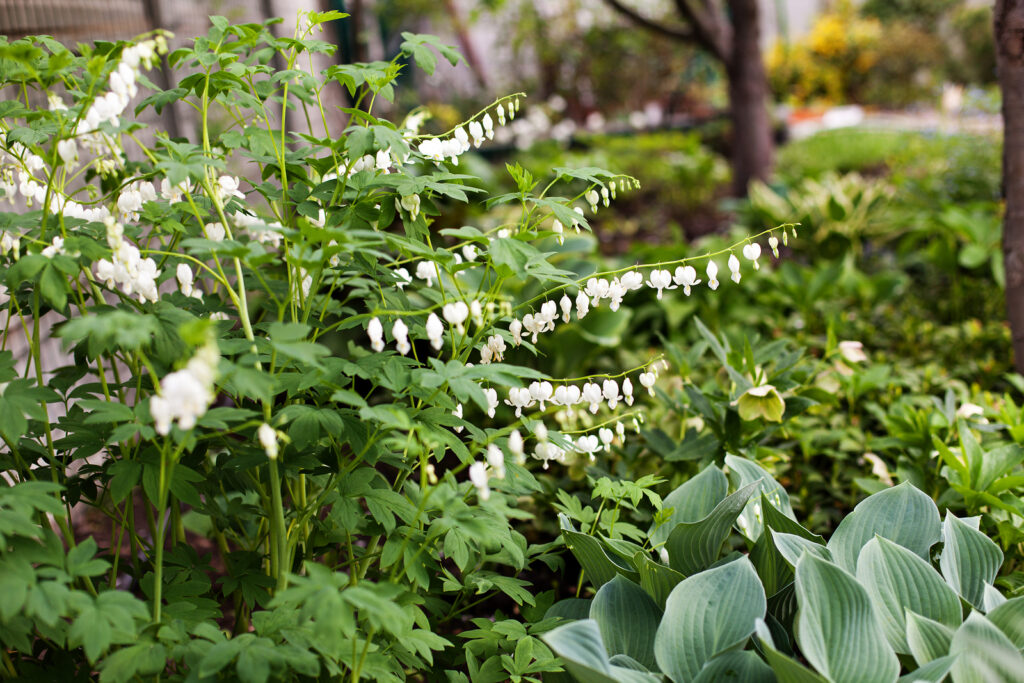
Annuals and perennials that thrive in full shade
| Common Name | Botanical Name | Zones |
| Arum, Italian | Arum italicum | 6-10 |
| Astilbe | Astilbe spp. | 3-8 |
| Bleeding heart | Dicentra spp. | 3-9 |
| Bugbane | Cimicifuga spp. | 3-8 |
| Cast iron plant | Aspidistra elatior | 8-10 |
| Christmas rose | Helleborus niger | 3-9 |
| Coleus | Solenostemum scuttellarioides | Annual |
| Epimedium | Epimedium spp. | 4-9 |
| Hosta | Hosta cultivars | 3-8 |
| Impatiens | Impatiens spp. | Annual |
| Lenten rose | Helleborus orientalis | 4-9 |
| Ligularia | Ligularia spp. | Annual |
| Pigsqueak, Bergenia | Bergenia spp. | 3-8 |
| Pulmonaria, Lungwort | Pulmonaria saccharata | 3-8 |
| Virginia bluebells | Mertensia virginica | 3-7 |
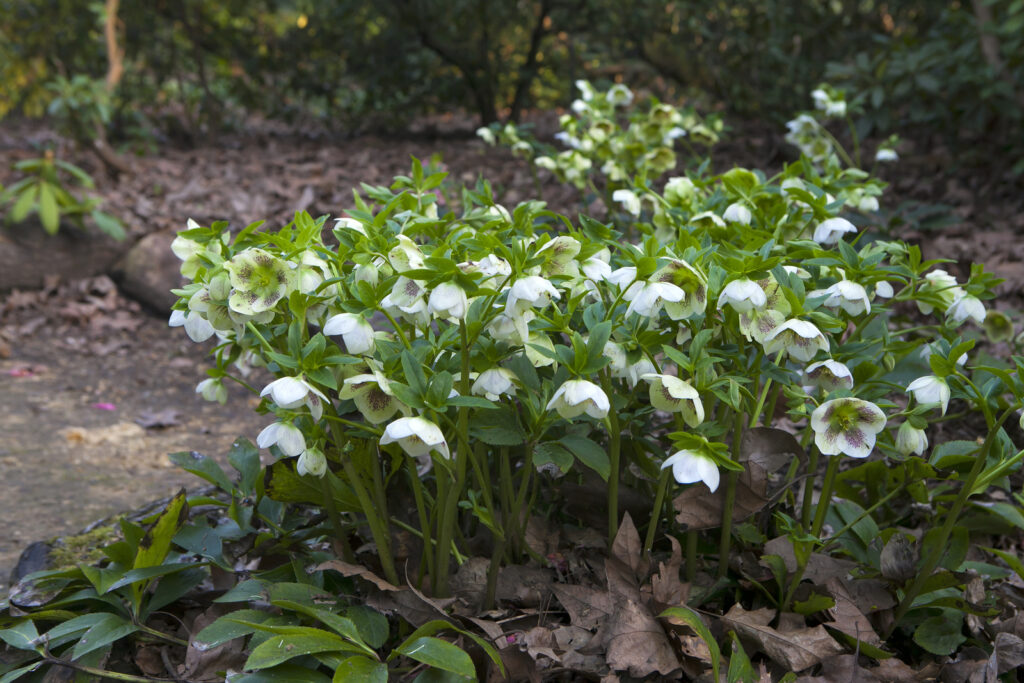
Annuals and perennials that thrive in part shade
| Common Name | Botanical Name | Zones |
| Agapanthus | Agapanthus spp. | 8-10 |
| Ajuga | Ajuga spp. | 3-9 |
| Amethyst flower | Browallia speciosa | Annual |
| Begonia, hardy | Begonia grandis | 6-10 |
| Begonia, wax | Begonia x semperflorens-cultorum | Annual |
| Brunnera, heart-leaf | Dicentra spp. | 3-9 |
| Cardinal flower | Lobelia spp. | 2-9 |
| Columbine | Aquilegia spp. | 3-9 |
| Coral bells | Heuchera sanguinea | 3-9 |
| Corydalis | Corydalis spp. | 4-8 |
| Cupflower | Nierembergia spp. | Annual |
| Cyclamen, hardy | Cyclamen hederifolium | 7-9 |
| Daylily | Hemerocallis spp. | 3-10 |
| Dead nettle, spotted | Lamium maculatum | 3-9 |
| Ferns | Various | Varies |
| Flowering tobacco | Nicotiana spp. | Annual |
| Foam Flower, Allegheny | Tiarella cordifolia | 4-9 |
| Forget-me-not, Chinese | Cynogolssum amabile | Annual |
| Forget-me-not, Woodland | Myosotis sylvatica | Annual |
| Foxglove | Digitalis purpurea | 4-8 |
| Fuchsia | Fuchsia spp. | 8-10 |
| Geranium, hardy | Geranium spp. | 3-8 |
| Goatsbeard | Aruncus dioicus | 3-7 |
| Goldenstar | Chrysogonum virginianum | 5-9 |
| Hellebore | Helleborus spp. | 5-9 |
| Kafir lily; clivia | Clivia miniata | 9-11 |
| Lady’s mantle | Alchemilla mollis | 4-7 |
| Lily-of-the-valley | Convallaria majalis | 3-8 |
| Lilyturf | Liriope muscari | 7-10 |
| Mimulus | Mimulus x hybridus | Annual |
| Mondo grass | Ophiopogon japonicus | 7-9 |
| Money plant; honesty | Lunaria annua | 4-8 |
| Monkshood | Acontium spp. | 3-7 |
| Obedient plant | Physostegia virginiana | 2-9 |
| Pansy | Viola x wittrockiana | Annual |
| Phlox, creeping | Phlox stolonifera | 2-4 |
| Primrose | Primula spp. | 3-8 |
| Queen-of-the-prairie | Filipendula rubra | 3-8 |
| Salvia, annual red | Salvia splendens | Annual |
| Sweet alyssum | Lobularia maritima | Annual |
| Trillium | Trillium spp. | 4-8 |
| Turtlehead, pink | Chelone lyonii | 3-8 |
| Vinca, periwinkle | Vinca spp. | Varies |
| Violet | Viola spp. | Varies |
| Wishbone flower | Torenia fournieri | Annual |
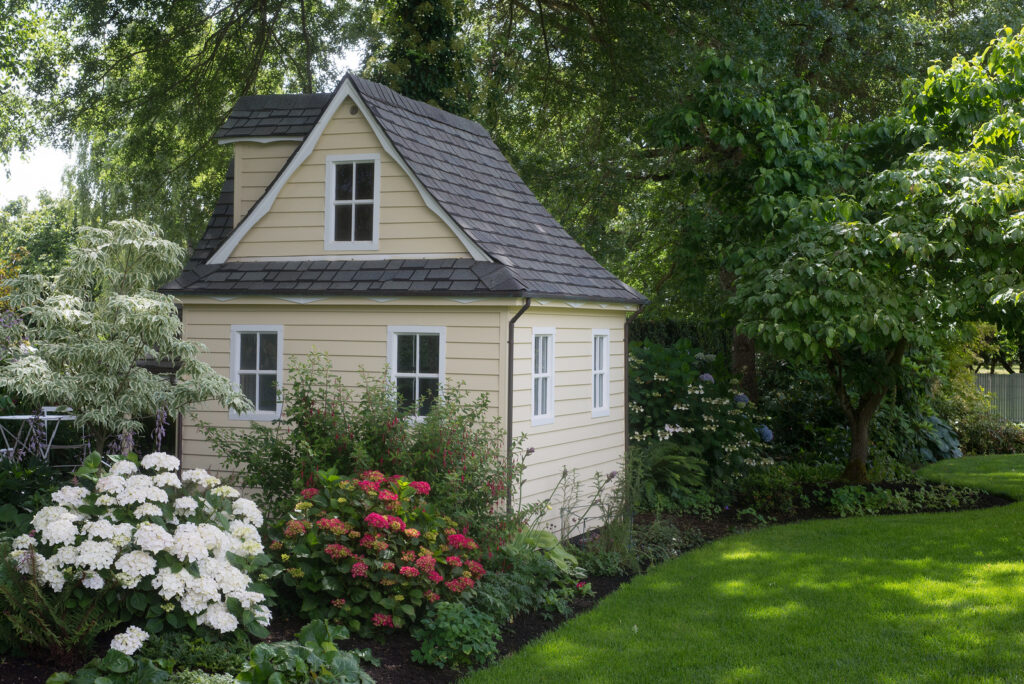
Shrubs that grow in shade
| Common Name | Botanical Name | Zones |
| Acuba, Japanese | Acuba japonica | 7-10 |
| Boxwood | Buxus spp. | Varies |
| Daphne | Daphne spp. | Varies |
| Euonymous, Japanese | Euonymous japonica | 7-9 |
| Gardenia | Gardenia jasminoides | 8-10 |
| Holly | Ilex spp. | Varies |
| Honeysuckle | Lonicera pileata | 5-9 |
| Laurel, cherry | Prunus laurocerasus | 6-9 |
| Leucothoe, drooping | Leucothoe fontanesiana | 5-8 |
| Magnolia, southern | Magnolia grandiflora | 6-10 |
| Mahonia | Mahonia spp. | Varies |
| Mountain laurel | Kalmia latifolia | 4-9 |
| Pieris | Pieris spp. | Varies |
| Pittosporum, Japanese | Pittosporum tobira | 8-10 |
| Rhododendrons and azaleas | Rhododendron spp. and hybrids | Varies |
| Skimmia, Japanese | Skimmia japonica | 6-9 |
| Sweet olive | Osmanthus spp. | 8-9 |
| Viburnum, sweet | Viburnum odoratissimum | 8-10 |

Conifers that grow in shade
| Common Name | Botanical Name | Zones |
| Cryptomeria, Japanese | Cryptomeria japonica | 6-8 |
| False cypress | Chamaecyparis spp. | Varies |
| Incense cedar | Calocedurs decurrens | 5-8 |
| Hemlock, Canada | Tsuga canadensis | 3-7 |
| Podocarpus; yew pine | Podocarpus macrophyllus | 8-10 |
| Spruce, white | Picea glauca | 2-6 |
| Yew | Taxus spp. | 4-7 |
| Yew, Japanese plum | Cephalotaxus harringtonia | 6-9 |
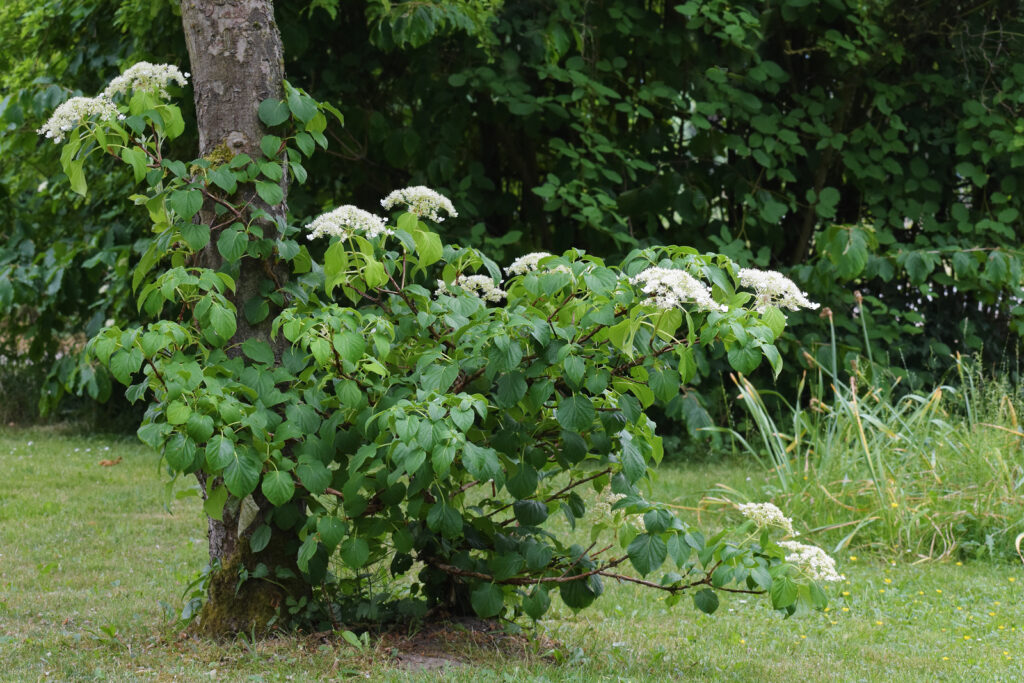
Vines that grow in shade
| Common Name | Botanical Name | Zones |
| Clematis, large-flowered | Clematis x hybrida | 3-9 |
| Clematis, sweet autumn | Clematis ternifolia | 4-9 |
| Cross vine | Bignonia capreolata | 6-9 |
| Honeysuckle, goldflame | Lonicera x heckrottii | 4-9 |
| Hydrangea, climbing | Hydrangea petiolaris | 4-7 |
| Ivy, English | Hedera helix | 5-9 |
| Jasmine, Madagascar | Stephanotis floridunda | 10-11 |
| Silver lace vine | Polygonum aubertii | 4-9 |
| Trumpet creeper | Campsis radicans | 4-9 |
| Virginia creeper | Parthenocissus quinquefolia | 4-9 |

Bulbs that grow in shade
| Common Name | Botanical Name | Zones |
| Agapanthus | Agapanthus hybrids | 8-10 |
| Begonia, tuberous | Begonia x tuberhybrida | 10-11 |
| Caladium | Caladium bicolor | 8-11 |
| Crocus | Crocus spp. | 3-8 |
| Cyclamen, hardy | Cyclamen hederifolium | 7-9 |
| Daffodil | Narcissus spp. | 3-8 |
| Naked ladies | Lycoris squamigera | 5-9 |
| Squill | Scilla spp. | 2-8 |















